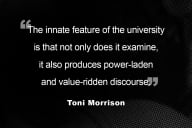You have /5 articles left.
Sign up for a free account or log in.
For decades, researchers have tried to boost the very low success rates of first-generation, low-income and underserved minority students in STEM education in college. Yet while more students from these groups have been entering colleges and pursuing STEM majors, the vast majority still are not earning STEM degrees. According to recent statistics, only 29 percent of Latinx students, 25 percent of Native American students and 22 percent of black students complete a STEM degree within six years.
Those students keep dropping out of STEM fields at a discouragingly high rate despite the fact many colleges and universities -- as well as foundations and national organizations -- have gone out of their way to fund and develop programs specifically to improve the retention of first-gen, low-income and underserved minority students in STEM. Campuses have experimented with a plethora of interventions, from robust summer bridge programs and first-year seminars to career counseling services and one-off workshops. Many institutions have undertaken curriculum and instructional reform, as well as offered students undergraduate research opportunities, tutoring, partnerships with learning centers and other support.
Yet attrition rates for such students remain high. Why has this challenge proved so pernicious and persistent -- despite the expensive and time-consuming efforts made to address it?
As researchers of STEM education and reform, we don’t think funding yet another high-priced program or creating a newfangled intervention will resolve the problem. In fact, we believe a solution actually already exists on our campuses -- but we’ve been blind to it because we work too much in our individual silos.
The solution is this: we need to work across units to create an integrated community of support for students. Instead of more programs and interventions, we need more connections between existing efforts -- especially between student affairs and academic affairs.
We made this discovery while studying the impact of a project called The California State University STEM Collaboratives, designed to provide immersive educational experiences to incoming STEM students on eight system campuses, with the goal to improve persistence and close achievement gaps. This project has developed integrated programs -- combining summer bridge and first-year experience programs with redesigned introductory STEM courses. It aims to bridge the traditional divides between student affairs staff and faculty members, with the goal to better support first-year STEM students both inside and outside the classroom.
For example, Humboldt State University put together Klamath Connection, a program that integrated several different initiatives: a summer immersion experience with fieldwork at the Klamath River, a first-year seminar course and linked redesigned courses in both STEM and non-STEM disciplines. The goal was to foster a sense of belonging for incoming underrepresented STEM students by helping them build relationships with peers, faculty members, administrators, the larger community around Humboldt and the natural world through the Klamath River.
The results of Klamath Connection were transformative. Not only did the program build a strong sense of belonging and community for students, it boosted student success rates significantly. Student persistence was 12 percent higher, and retention in STEM fields 14 percent higher, for students in the program compared to those in a control group.
First-gen, low-income and underrepresented minority students absolutely need support from faculty members in STEM and other academic leaders who can advise them on the right course sequences to take, help them address any gaps in educational preparation and connect them to undergraduate research, internships, field experiences and other important opportunities. But these students may be unfamiliar with college expectations, come from underresourced and inadequate high school environments, have significant work and family obligations, or need to cope with past and present trauma. They also benefit from the attention of student affairs staff members who recognize that students need validation and support in the face of these many additional hurdles.
What our research identified is the importance of academic and student affairs staff working together to develop interventions that use the knowledge that exists between both divisions and can help lead to STEM student success. Even more to the point, we found the specific support programs matter less than the integration of these programs. Linking the work of faculty members and student affairs professionals creates multiple touch points of support, strong personal and professional relationships, and an ongoing community that students can rely on as they encounter challenges. That’s something that single interventions, or even multiple disconnected interventions, typically fail to create.
At most colleges and universities, elements of first-gen and STEM student success programs are locked into separate silos that almost never connect. That means students who seek support from one unit or another end up getting only some of their needs met.
In short, our research shows that the problem of supporting first-gen, low-income and underrepresented minority groups in STEM fields is an organizational one -- not a programmatic one, as is typically assumed. Campuses need to reorganize their existing support programs and link them together -- yet few institutions have taken this important step.
The solutions to STEM student success already exist on our campuses. We just need to start working together to realize it.








